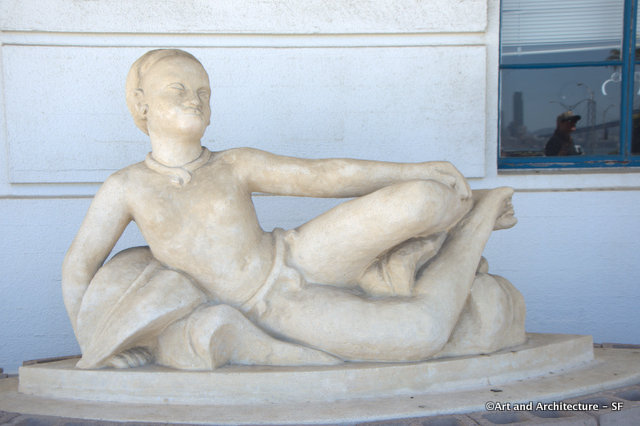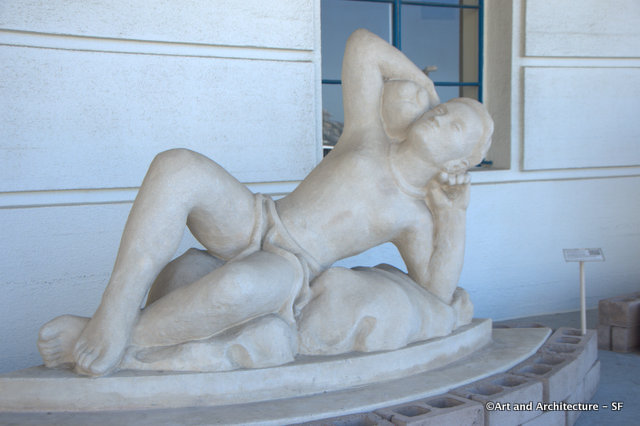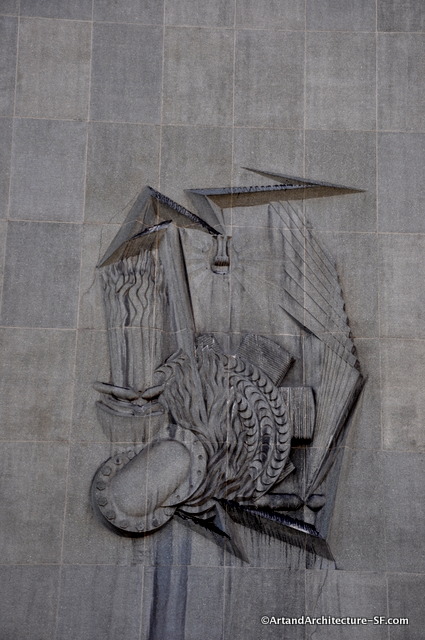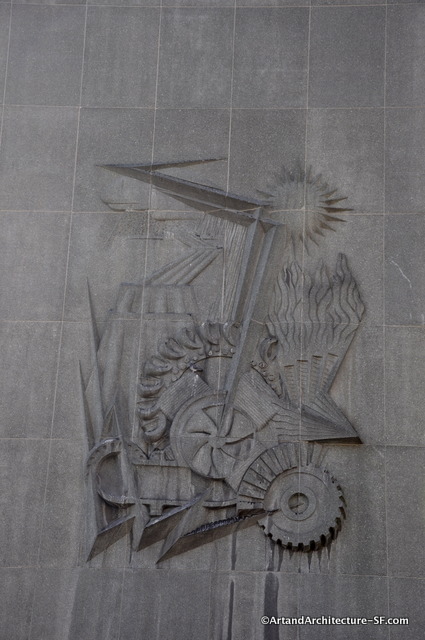Treasure Island
Building #1
These cast stone statues are part of Adaline Kent’s group of three Pacific Islander statues that were among the twenty Pacific Unity sculptures produced for the Court of the Pacifica at the 1939-1940 Golden Gate International Exposition. The two shown here are listening to a stringed instrument (most likely a ukelele) played by a young boy, the third statue, that is unfortunately lost.
Adaline Kent was born in Kentfield, California in 1900. She attended Vassar College and upon graduation she returned to the Bay Area, where she studied for a year (1923-24) with Ralph Stackpole at the California School of Fine Arts (now the San Francisco Art Institute). Stackpole was a leading proponent of the “direct-cut” sculpting method. She then traveled to Paris in 1924 to study at the Academy de la Grand Chaurniere with Emile Antoine Bourdelle, a disciple of and former assistant to Rodin.
Kent returned to San Francisco in 1929 and set up a studio in North Beach. She soon established a reputation as an innovative and original sculptor of great originality, developing an abstract style rooted in surrealism and becoming a prominent member of the San Francisco Art Association. Kent exhibited or juried in the prestigious Annual show nearly every year from 1930 until her death in 1957. She served on the Board of Directors from 1947-57, and taught at the California School of Fine Arts in 1955.
Following a trip in 1953 with her husband, sculptor Robert Howard to Egypt and Greece, her work evolved toward simplified columnar forms.
In 1957 Adaline Kent died in an automobile accident on the Pacific Coast Highway south of Stinson Beach.




